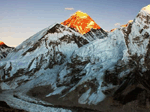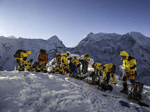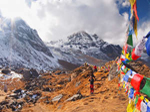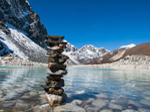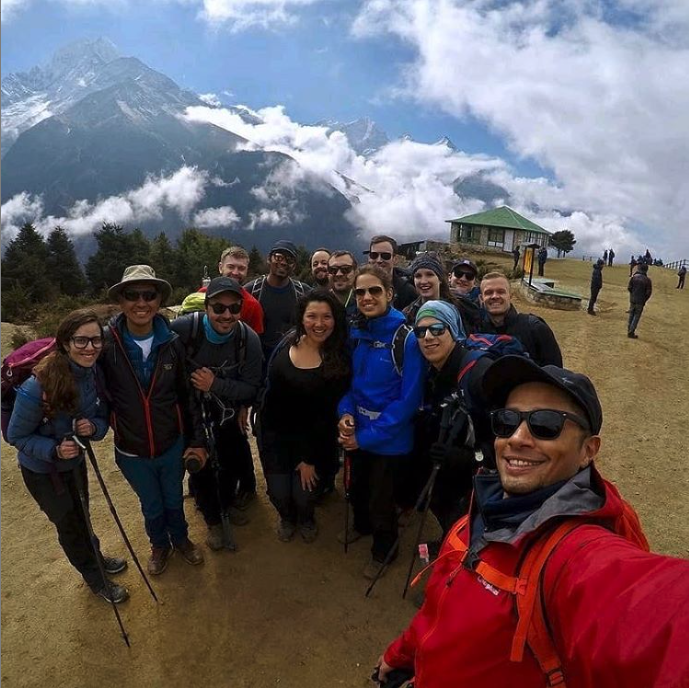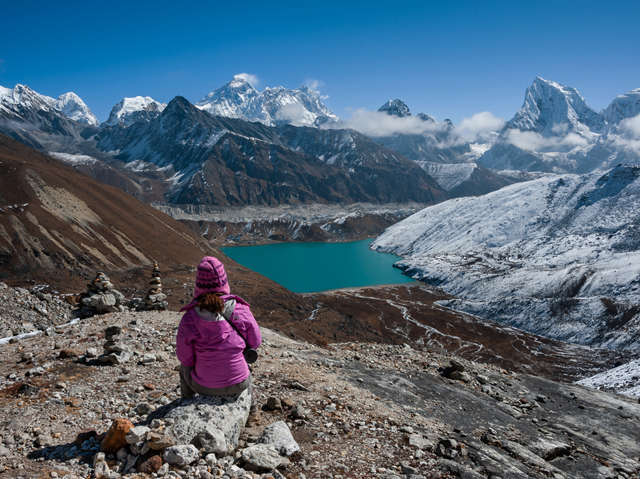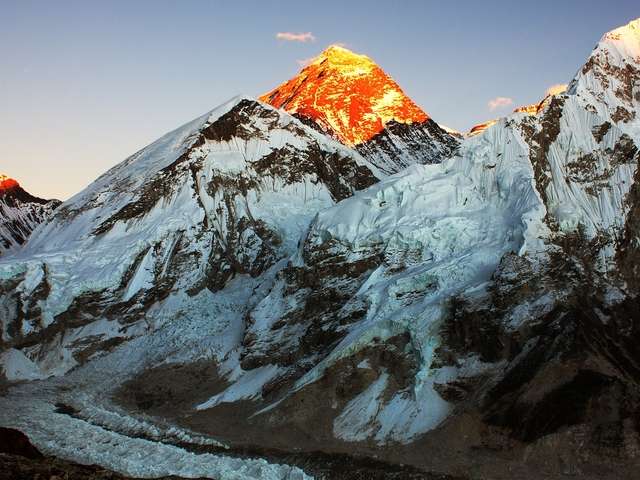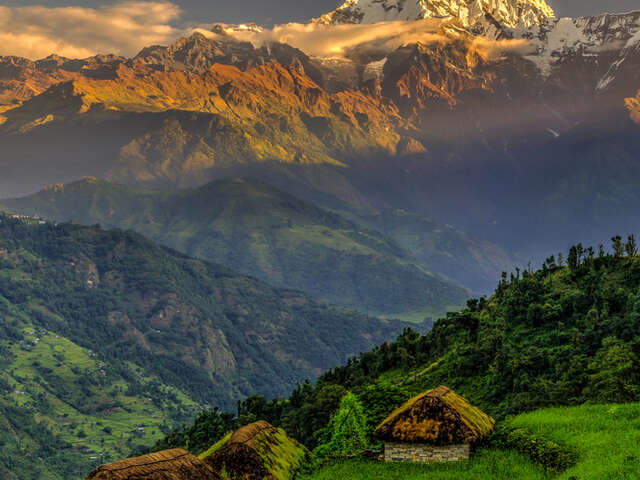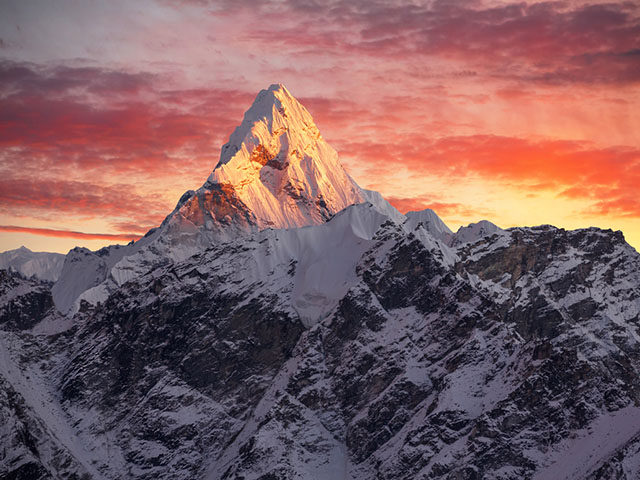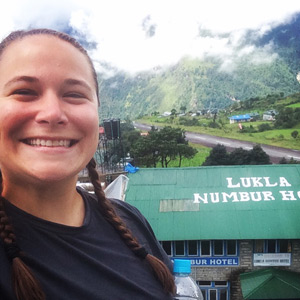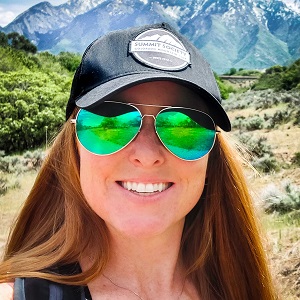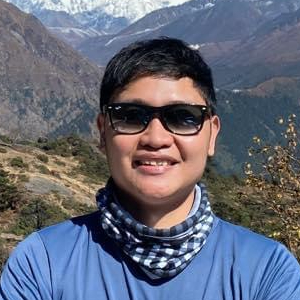
Are you dreaming of trekking to Everest Base Camp? The trip through the Himalayas to stand at the base of Everest in person is breathtaking. There’s a reason this majestic peak is one of the 7 Natural World Wonders—standing at 5,354m with Mt. Everest towering above you is surreal.
While we believe almost anyone can enjoy trekking to Everest Base Camp, there are some things to make the trip go more smoothly and enjoyably. In this article, we’ll talk about some of the best tips, tricks, and travel hacks for trekking Everest Base Camp.
32 Tips for Trekking Everest Base Camp
If you can only choose one trek in Nepal, we believe Everest Base Camp is the best choice. Below, we list 32 of our top tips for trekking Everest Base Camp. These tips will help save you time and money while making your trip more comfortable so you can make the most of this once-in-a-lifetime adventure!
1. Train Ahead of Time
While people of many ages and physical abilities can make the trek to Everest Base Camp, you’ll be much more comfortable if you’re in good physical condition to do so. You don’t have to be a triathlete to hike Everest Base Camp, but you do want to make sure you have the endurance to get there. Here is an Everest Base Camp training guide to help get you in shape for your visit.
2. Trek Through Phortse
There are two main treks to Everest Base Camp. The first is the classic Everest Base Camp route which goes from through Tengboche to Everest Base Camp. The second is a slight adaptation that treks from Lukla to Phortse Thanga before reconnecting with the classic trail to Everest Base Camp. The Everest Base Camp through Phortse trek doesn’t take extra travel time, but reveals a beautiful, lesser-traveled trail. Its scenery is beautiful and helps take you away from the crowds sometimes experienced between Namche and Tengboche. It also reveals a memorable landscape. Worried about missing the Tengboche Monastery? Don’t be! Most of these treks stop through Tengboche on the return journey.
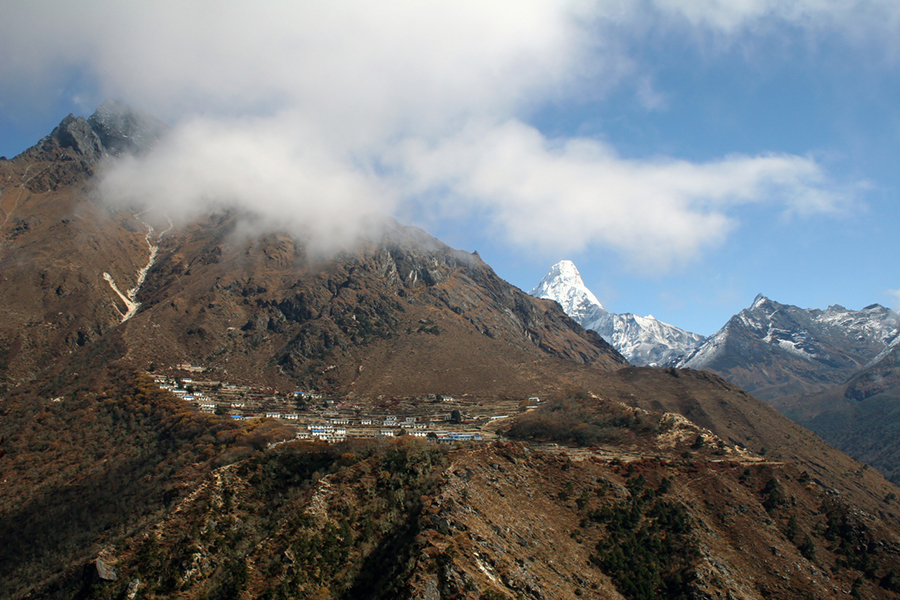
View of Phortse
3. Plan Extra Days at the End
If you have any extra days to spend in Nepal, it’s best to plan them at the end of your trek—not the beginning. Inclement weather can delay the flights going out from Lukla and back to Kathmandu. If you’re held up in Lukla because of bad weather, it’s best not to have an international flight going out the next day. Read more about flight delays at Lukla here.
4. Buy Gear in Kathmandu
Kathmandu has more trekking shops then you can count with intense competition that drives prices down. This means you can get great prices on gear you might not be able to afford at home. Not all gear is built equally. Here are 6 tips for buying cheap trekking gear in Kathmandu while ensuring you get the best bang for your buck.
From the author: I bought my wife a great down jacket for around $50 that would have cost over $300 in the US. At first glance, a lot of the gear looks similar, but quality varies quite a bit (and it’s not necessarily related to price). If you like we can arrange for one of the team from Himalayan Wonders to accompany you while you shop and help you find what you need.
5. Get the Best Rate on your Flight
The flight is going to be one of your biggest expenses for trekking Everest Base Camp. However, there are some tricks for making sure you get the best deal. Here is an article we wrote on how to get a cheaper flight to Nepal.
6. Break in Your Shoes Beforehand
You don’t want to be breaking in shoes on the trail to Everest Base Camp. Blisters, chafed skin, and aching feet will dampen your experience. If you’re purchasing new hiking boots or shoes for the hike, take time to wear them around and hike with them before your trip. This will help you break them in and make sure there aren’t any fit issues that will pinch, rub, or stress your feet. Wear them around the house and town for a week or two, then take them on a couple of hikes—the best breaking-in happens off pavement.
7. Stay Within Luggage Weight Limits
Your flight from Kathmandu to Lukla (the beginning of the Everest Base Camp Trek) has strict weight limitations. Your main pack can only weigh 10kg (22 lbs) and your carry-on can only be 5kg (11 lbs). It is possible to pay for additional luggage, but it’s not recommended. Any extra luggage you carry on your flight to Kathmandu is going to be trekked up the mountain by you or your porters.
8. Use a Professional Trekking Company
There are several ways to trek to Everest Base Camp: going with a professional trekking company, hiring a personal guide or porter, or doing it on your own. In most cases, hiring a local professional trekking company is well worth your while. A professional trekking company has the organization and infrastructure to help things go as smoothly as possible. This means they have a better ability to navigate flight delays, emergency services, communication challenges, and more. Using a local trekking company (such as Himalayan Wonders) also means you’ll also be able to experience the knowledge and culture of the local guides while benefiting from the company’s relationships in the area.
From the author: You probably think I threw this in here just to give our own company a plug so it’s probably better to relate it with a story. My aunt went on a trek to Everest a few years back and decided not to use our company because it cost $50 more than the independent guide she found. Everything went well until she got back to Lukla where bad weather was limiting the number of flights going out. Our good relationships with the locals meant we were able to get our clients on some of the flights. On the other hand, my aunt was stuck for 2 days and missed her international flight making that $50 look like a lot less of a bargain. She told me all this after the fact, otherwise I would have tried to help—but it’s a good story since it highlights how important having good local relationships is and it’s just one of many ways an established company can add value.
9. Read the Terms of Service
You can find a lot about how an Everest Base Camp trekking company handles emergency situations by their terms of service. A well-established company will have Terms of Service that cover in-detail what can go wrong in Nepal and how the company manages those situations. This is good to know in advance.
One thing you can be assured of with Himalayan Wonders is that no matter what happens, we will do our best to make sure you have a great trek and that you can be assured the full support of our team. We have been running treks for almost a decade now and experience is definitely something that counts!
10. Prepare for Flight Delays
The Lukla flight depends on good visibility both in Kathmandu and Lukla. Conditions can change quickly on the mountain, which means it is not uncommon for flights to be delayed. Nepal is a developing country and communications at the airport are often disorganized. You might be lucky and get to the airport on a flight immediately, but more often than not, you’ll experience a wait of at least a few hours before your flight. We recommend preparing for a delay by bringing a book, snacks, and a little extra patience.
While short delays are to be expected, we know that longer delays can be stressful. This is another time when using an Everest Base Camp Trekking company can offer additional assistance. If we’re not able to get you on an earlier flight, we can help provide accommodations while you wait and will continue working to make sure you get the best flight possible.
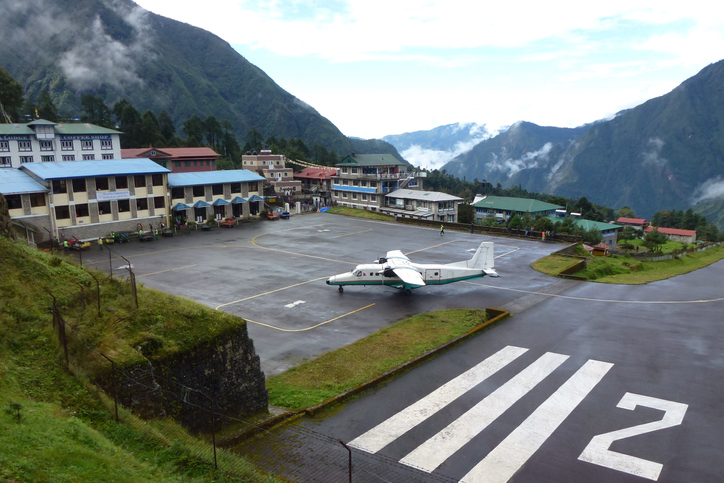
11. Expect a Flight Diversion to Ramecchap
During the past several years, a combination of construction and increased flight volume at the Kathmandu airport has led to some changes in flight routes. During the peak season, most of the flights are being diverted from Kathmandu to Ramecchap. Ramechhap is a small airstrip 140 km (85 miles) from Kathmandu with little or no existing tourist infrastructure.
The drive to the airport takes around 4 hours and the return to Kathmandu between 5 and 6 hours depending on traffic. Although it is an inconvenience and added challenge to have to get up earlier and travel back and forth to Ramecchap on a windy mountain road, it does not make any significant changes to your trekking schedule. Himalayan Wonders has a team member staying in Ramecchap to make sure everyone gets on their flights and to arrange helicopters when requested. Read more about Ramechhap Flight Diversions here.
12. Take Care of Your Feet
Bad blisters can end a trek just as easily as altitude sickness. I recommend bringing some duct tape or moleskin and treating the area as soon as you start to feel discomfort and not after it becomes an actual blister. Here’s a great article on how to do it from Backpacker.
13. Bring Your Own Pillowcase
While tea houses provide sheets on the bed, it’s sometimes safest and most comfortable to use your own pillowcase. While we’ve never personally had any issues with pillowcases on the Everest Base Camp trek, we’ve heard of travelers contracting conjunctivitis (pink eye) in other locations, which could have been prevented with this one small additional item.
14. Bring Playing Cards & a Book
After a long day of trekking, all you’ll want to do is settle in and relax at the tea houses. Internet is slow (and expensive) and batteries drain quickly in the cold, which means if you’re accustomed to technology being your primary entertainment, you’re sure to be disappointed. Instead, make sure to bring a good book and some playing cards. Brush up on your favorite card games (and make sure you know how to explain them to others) to pass the time before bed.
15. Carry Your Own Snacks
You’ll be able to find lots of snacks on the mountain, but they’re often pricey. After a long day of trekking, you’ll probably be craving the comfort of some of your favorite snacks. Bringing your own snacks will ensure you have the snack you crave—and at a reasonable price.
16. Bring a Travel Thermos & Tea
If you like hot beverages in cold weather, you may opt to bring a thermos. This will help keep your drinks as hot as possible even in the cold. You may also consider bringing your own teabags. While hot water is provided, the tea can get pricey in the tea houses!
17. Expect Rough Bathrooms
While the owners of the tea houses along the Everest Base Camp trail do their best to offer the best experience possible, the reality is that the area is remote and rough. The bathrooms will most likely not meet up to your standards of cleanliness. They’re often sparse, rugged, and require manual flushing (pouring water from a bucket). Come prepared with hand sanitizer and wipes (as some sinks are outside and very cold) and be prepared to squat!
18. Get a Good Night’s Rest
You will probably be surprised by how comfortable the tea houses are on the trek but the bedroom walls are thin and noise carries quite easily. If you’re a light sleeper I recommend bring some foam earplugs for a good night’s sleep. While it might be warm trekking during the day, it’s definitely cold at night so make sure you have a warm sleeping bag and thermals. We recommend bringing (or renting) a -20C sleeping bag.
19. Prepare for Cold and Rain
If it’s sunny you might be surprised at how warm it can get during the day. Most trekkers wear t-shirts and shorts for the first few days while the elevation is still low. However, when the sun sets the temperatures, drop quickly. Wear a warm hat and thermals while sleeping and take a Nalgene bottle filled with hot water to keep it in your sleeping bag to stay warm. Even if it looks like a sunny day, make sure to carry a poncho in your day pack. The weather on the mountain can change quickly.

20. Stay Hydrated
Make sure to drink plenty of water while on the trail and always keep a full bottle as a spare. You can buy bottled water from many of the tea houses along the trail during the day. A liter of water at the start of the trek in Lukla will run you around $1 USD but by the time you reach Gorek Shep prices are closer to $4. If you want to save some money and help keep the mountain clean a better option is to bring chlorine or iodine tablets and fill your bottle from the local streams. Ask your guide to point you in the right direction. Most villages have a clearly identified water drinking water source that usually comes out of a pipe or hose along the trail.
21. Make Sure to Eat Enough
We provide three meals a day on the trek and a hot drink with each meal. If you’re especially hungry, order the Dal Bhatt as this is served all-you-can-eat. This is the traditional Nepali dish that consists of rice, dal, a vegetable, papad (fry bread), and pickle. We recommend the vegetarian options. Meat is flow in into Lukla then walked up the mountain, meaning it’s unlikely the meat you eat will be fresh. It’s okay to eat eggs and Yak cheese but take it easy on the cheese. Here is a good video showing the typical food and menu options (View here).
22. Bring Handi-Wipes
While bucket showers are available at the tea houses, it’s often not worth braving the cold to use them. Most guests opt to use handi-wipes for a quick freshen-up at the end of the day.
23. Know Your Headaches
A headache can be one of the first signs of altitude problems. Small headaches are common and should not worry you or keep you from trekking. However, you should mention any headache to your guide so they can better keep tabs on your wellness. If your headache gets progressively worse or you have other signs of altitude sickness, it’s time to stop ascending or even head down. Altitude sickness if allowed to progress is serious. If you need to arrange extra days on the mountain we can normally arrange that (please see our Terms of Service).
24. Remember Sun Protection
Taking care of your eyes and skin is important. Sunburns happen much quicker at high elevations, so make sure to apply sunscreen and sun-protective lip balm a few times a day and wear a hat. Sunglasses are a must-have. If you wear prescription glasses, it’s good to have a pair of prescription sunglasses or at least clip-ons. If you have an extra day in Kathmandu before the trek, you can buy prescription sunglasses for around $25 which is quite a good deal.
25. Bring a Head Torch
Head torches can be used around the tea houses for low-light situations, as well as for early mornings on the trail. Make sure your batteries are fresh.
26. Dress in Layers
Layering allows you to easily regulate your body temperature and stay comfortable while trekking. It’s even better if your layers have zippers so that you have even more control of your body temperature. You can find some more advice on how to layer and what to bring by clicking here.
27. Don’t Carry too Much
When you arrive in Kathmandu, we will provide you with a duffel bag that porters will carry for you on the mountain. You just need to carry a day pack with the things you need during the day as you won’t have access to your duffel until you reach the tea house in the evening. Make sure to carry your valuables, prescriptions, extra layers, rain gear, water, camera, snacks, and sunblock in this daypack as well as moleskin or duct tape in case of blisters.
Don’t overpack your daypack. Keeping your daypack light and filled only with essentials will help your trekking be easier and more enjoyable.
If you’re feeling bad about having porters carry your stuff, consider that your porter probably traveled several days from his village just to get to Lukla so he could get some work and take care of his family. The money you spend on salaries and the tips are an important part of the local economy.
28. Keep Batteries Close to Your Body
Batteries drain more quickly in cold weather. On the Everest Base Camp trail, many people will keep phones and camera batteries close to their person. Most even sleep with them in their sleeping bags. While you can charge batteries at tea houses, it’s often very expensive ($5-$10USD/hour).
29. Don’t Rely on ATMs
There are plenty of ATMs in Kathmandu so getting cash before the trek should not be a problem. Once you start the trek, however, the only ATM is in Namche Bazaar and it seems to have problems frequently, so don’t rely on it.
30. Take Your Time
Everest Base Camp is not a race. Remember, no one will ever ask how long it took you to trek up to Everest Base Camp; they’ll mostly just appreciate that you did it at all! Don’t feel the need to rush, as this can leave you tired, sore, and oxygen-deprived. Instead, keep slow and steady on the trail. Work with your guides to ensure you’re not exceeding your capabilities.
31. Add on Gokyo Lakes
If you have a few extra days to add on to your trip, it’s well worth trekking through Gokyo Valley. The gorgeous lesser-traveled Gokyo landscape is nestled in a hidden valley of the Khumbu region. You’ll experience tranquil lakes traditional villages, and breathtaking landmarks such as the glistening ice trail of Cho La pass and the famed Kala Patthar black rock. Trekking Everest Base Camp & Gokyo Lakes only takes and three days longer than the traditional Everest Base Camp trek and is well worth the journey.
32. Consider Alternate Routes
Many people default to the classic Everest Base Camp, and for good reason! This 14-day trek gets you to the highlight of the adventure—Everest Base Camp—in a perfect two-week adventure. However, there are alternate treks available depending on the amount of time you have to travel. If you have more time to travel, consider the 20-Day Three Passes Trek which combines Everest Base Camp with views of 4 of the world’s tallest mountains.
If you’re short on time, consider doing the classic Everest Base Camp trek with a return trip via helicopter down from Everest Base Camp to Lukla which will save you a few days of trekking. There are also great views of Everest on a shorter 7-Day Everest View Trek.
Note: This post was originally developed in 2016 and the content updated with additional tips in 2019.
